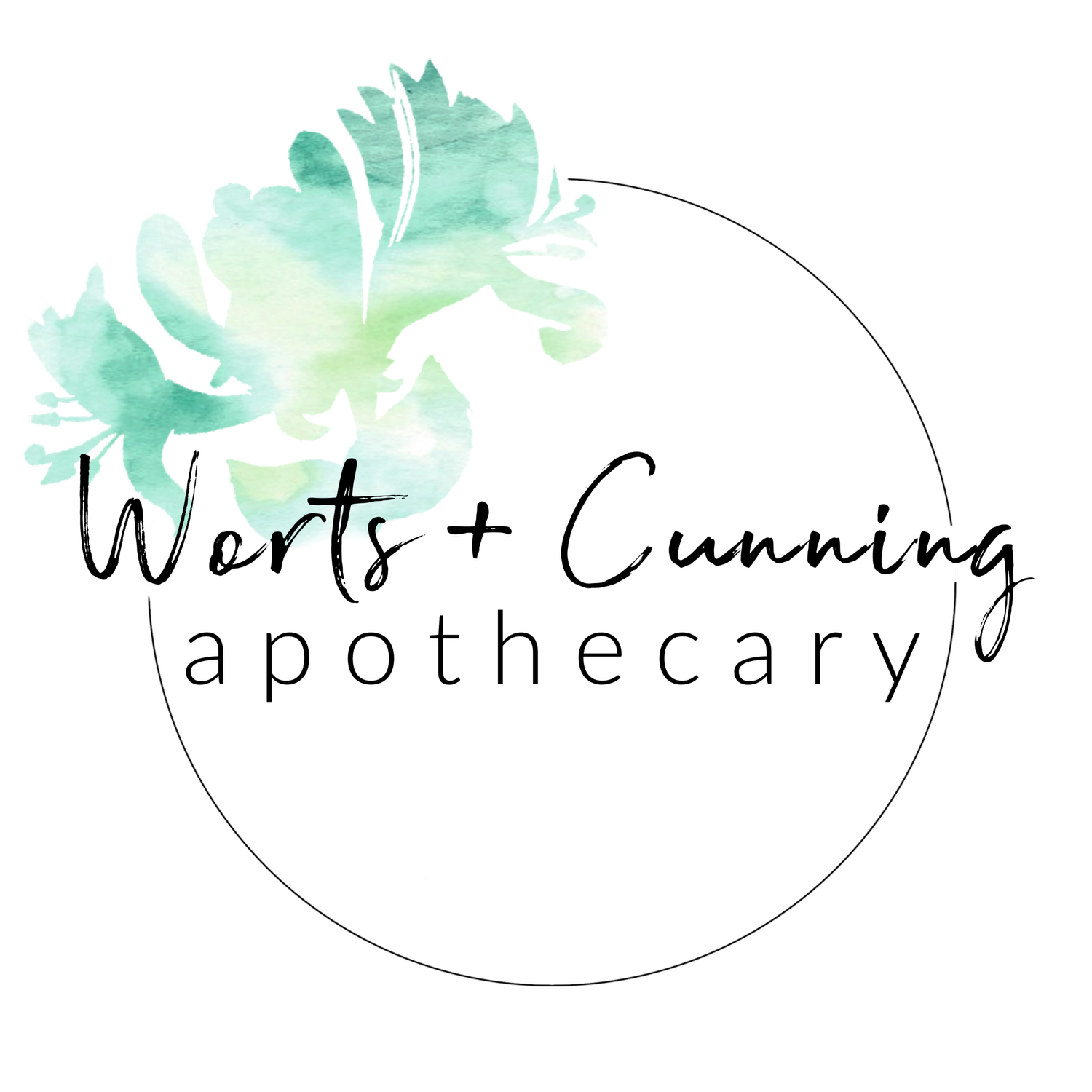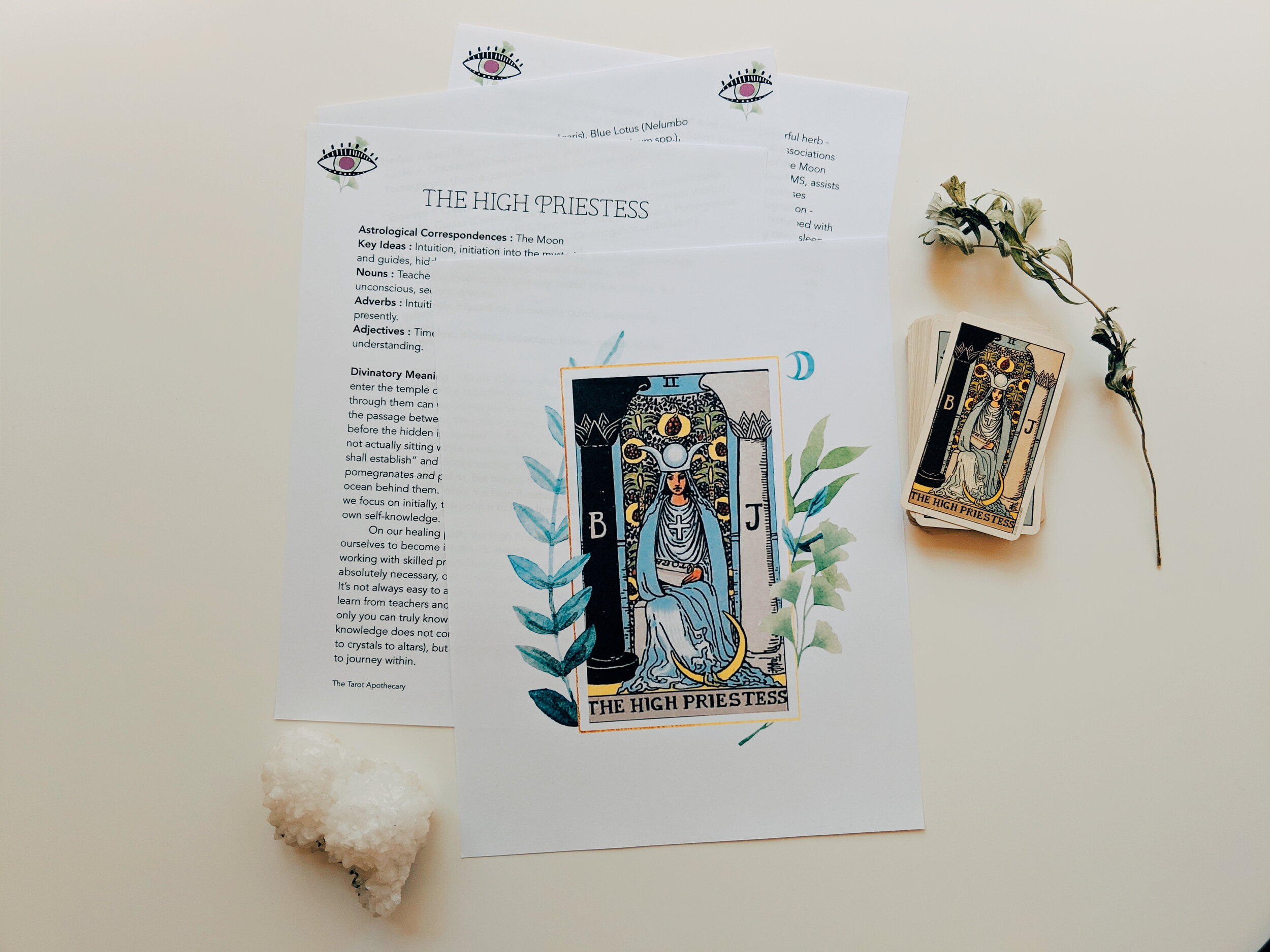Dreaming with the High Priestess
It was the High Priestess that taught me how to look into and beyond the images presented in the tarot. When I began my tarot studies with my Smith-Waite deck - at an age that feels both more distant and yet just passed at the same time - I followed the instructions in my first tarot book to perform a pathworking (i.e. a western esoteric tradition word for guided meditation that originated from specific practices of moving along the paths of the Tree of Life as illustrated in Kabbalah) with each card. I did just that and it’s something I’ve continued to do in my own practice and have taught it to my students, too, because I think it is so useful in magickal and healing work. As I was learning this pathworking technique, there were some cards that were my favorite to travel into and the High Priestess was and is one of them.
Perhaps it is the watery nature of the card that my Piscean heart adored or the fact that I knew early on in my life that I was to one day take vows of a Priest/ess/x. It was an easy, dreamy card for my little witchling self to connect with and I loved learning about the symbolism of the card from the pomegranate’s on the fabric behind the High Priestess, to the Moon beneath their feet, and the pillars framing the scene.
Then, one journey into the card, I was overwhelmed by the sound of the sea. Suddenly I saw what had remained hidden, but seemed so obvious now. The sense of vastness I got whenever I journeyed into the card was not just because the High Priestess represented a library of arcane wisdom that I was so eager to read, but that they were, more importantly, a keeper of the gates of which beyond was a vast sea to explore. I had been looking at the card all this time but not really seen it - in the process, I had missed an entire world beyond the surface of my initial viewings of the image.
Such is the way of things, right? We think we are seeing all of it until we look again and find that the world is far more vast than originally thought. As a card of Moon, a representation of our consciousness, the High Priestess teaches us how to connect with the vastness both around and within us through the lunar path of dreamwork. Even more importantly, the High Priestess does this in a way that’s not about keeping secrets or revealing them, but teaches us, instead, how to read our world and discern knowledge through observation.
One of the primary herbs that I use to connect with the energy and healing magick of the High Priestess is Mugwort (Artemisia spp.). My favorite way to work with Mugwort is through herbal baths - I’ve shared a recipe for just that below. Tarot has long been rich in plant imagery and the Smith Waite deck illustrated esoteric knowledge of plants through its art, adding yet another layer of knowledge to the intricately layered world of the cards. If you’re enjoying all of this talk of plants and herbs, you can check out my full profile for the High Priestess from my course, The Tarot Apothecary, by joining my free Magick Mail newsletter. You’ll then gain access to a member’s only page full of recipes, rituals, and more.
Mugwort Dream Bath
Mugwort is one of the most revered of dreaming herbs in the western materia medica. I am lucky to live in a part of the world where native and migrating versions of the plant thrive, which is why I use three varieties in my dream bath blend. I prefer to bathe with Mugwort when it comes to dreamwork, but for those of you who feel more tethered to the waking world than the one of dreams, you might also try it in tea form.
I included Anise Hyssop (Agastache foeniculum) in the blend for a number of reasons, not least of which for its lovely smell. It’s a plant of Mercury with Venusian energies meaning that it helps us clear out and connect our pathways of communication (Mercury) through gentle, warming, and uplifting methods (Venus). It has a bit of a guardian energy to it, too, which is always useful in dream work and exploring the vastness of our inner realms.
Juniper Berries (Juniperus communis) round out the blend with their rich purple-black color reminding me of the Dark of the Moon. Juniper serves as a holy herb for burning in Celtic cultures, clearing the air of impurities and cleansing the energetic body. The plant helps us to remember our dreams and understand what they mean. As a Dark of the Moon herb, Juniper assists us in connecting to our depths through dreamwork.
I combined roughly equal parts of the following herbs, but adjust the amounts of each herb depending on what you have available. If you don’t have multiple varieties of Mugwort to use, simply use more of the variety that you do have.
Mugwort (Artemisia vulgaris)
Dream Plant (Artemisia douglasiana)
California Mugwort (Artemisia californica)
Anise Hyssop (Agastache foeniculum)
Juniper Berries (Juniperus communis)
Use 1/2 to 1 cup of herbs for a bath. I brew the herbs ahead of time in a jar, strain out the herbs, and add the infusion to my bath water (you can get all my tips and tricks for herbal baths, including bathing with herbs without a bath here). After a dream bath, I suggest going right to bed, spending some time journaling or maybe even pulling a few cards before heading off to sleep. For an extra layer of magick, you can even build a little dream altar ahead of time featuring the High Priestess and a dream pillow full of Mugwort to keep beside you bed.
☾
I hope you’re feeling inspired to look deeper into your tarot cards and, in turn, deeper into yourself. Using dreamwork as a tool of self-discovery is not only effective, but an ancient way of self-knowing. May you seek and find your High Priestess waiting for you to see beyond.



















